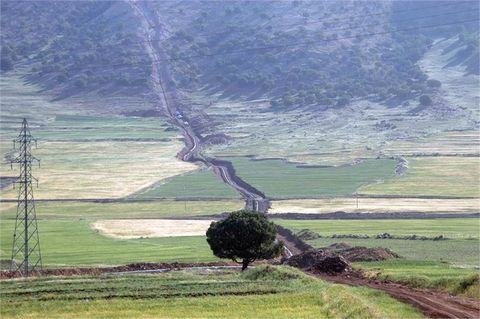Private Sector Engaged
According to the terms of the agreement signed between NPC and OICO, operation and maintenance of the pipeline has been fully awarded to the contractor. That would include pipes and compressor stations. The agreement runs for a period of 18 months. As far as expenditures are concerned, operation and maintenance constitute running cost while emergency conditions make up conditional expenses.
WEP has been built to develop the petrochemical industry in western Iran. With the implementation of this pipeline, the ethylene produced in Assaluyeh would be carried to northwestern Iran. As Iran’s private sector had never been awarded such a big project, this agreement is of high importance. However, it has to be noted that according to NPC officials, the new agreements pay special attention to experienced manpower and their empowerment and training.
The idea behind construction of WEP was to serve underdeveloped areas. NPC started its construction in 2004. Pilot operation of the pipeline began in 2012. In 2020, the Ministry of Economy and Finance transferred ownership of WPC to NPC. Then, NPC decided to choose a contractor for the project. The licensing round has been held in two phases and finally the project was awarded to OICO.
Of course, contractor costs will be procured by income gained from ethylene delivery to consumers. In fact, an agreement has been signed between NPC and clients for ethylene delivery for which fees have been set. The idea has been to optimize current trends.
Specifications
The 2,800-km WEP pipeline cuts through 11 provinces. It is fitted with eight compressor stations, five of which are already operational. A total of 13 petrochemical plants are connected to the pipeline. Annually, 2.1 million tonnes of ethylene is injected into WEP. So far, WEP has distributed 11 million tonnes of ethylene between subsidiaries.
The NPC boss said the products obtained from WEP were valued at $2 billion, adding the pipeline had created 15,000 direct jobs.
Currently, 13 petrochemical plants are connected to WEP, which would increase to 21 by 2025. According to Mohammadi, the injection capacity into WEP would increase to 3.5 million tonnes and revenue from the project would reach $3.7 billion while direct job creation would reach 17,000.
Currently, PVC and polyethylene are mainly produced along this pipeline, but with the expansion of the value chain, which is a major strategy pursued by NPC, polyethylene, ethylene oxide, ethanol amine and ethoxylate would be manufactured.
Value Chain
A major strategy adopted by the current administration is to expand and complete the value chain in the petrochemical industry.
Javad Owji, the minister of petroleum, has said Iran’s petrochemical industry has managed to account for the bulk of Iran’s hard currency needs. “We believe that petrochemicals exports are like half-raw sales.”
The minister expects the petrochemical industry to take action for the expansion and completion of value chain.
Noting that no investment had been made in the refining and petro-refining sectors, Owji said that travels rate would increase once COVID-19 has been contained. Therefore, the Petroleum Ministry intends to enhance the capacity of refineries both quantitatively and qualitatively prior to focusing on the construction of petro-refineries to supply fuel and to feed petrochemical plants.
He said building petro-refineries was a priority of the 13th administration, adding that crude sales were not limited to crude oil and condensate as exporting petrochemical products was like selling “half-raw” materials.
Owji has said that 30% of Iran’s petrochemical products was domestically consumed and the rest was exported. Therefore, taking the value chain seriously into consideration was an option to lower exporting raw petrochemicals.
Profitable Value Chains
Expansion of the value chain would be highly profitable for various manufacturing plants and would also help diversify products. For instance, launching a 1.65-million-tonne urea/ammonia plant or a 450,000-tonne plant for polypropylene production would require $700 million to $1 billion in investment, while in the methanol chain, polypropylene or polyethylene plants may be launched with an investment of $50 to $60 million.
There is no administrative body for value chain units in Iran and most investment in the petrochemical sector has been made in the parent industry. Therefore, the minister of petroleum has proposed to vice-president and the minister of industry, mine and trade to set up a working group comprising Ministry of Petroleum, Ministry of Industry, Mine and Trade and Ministry of Interior to focus on the construction of value chain parks for the downstream petrochemical industry.
Each park may incorporate 15-20 industrial units in various sectors including housing, car manufacturing, military and even healthcare.
According to the petroleum minister, legal mechanisms are in favor of parent petrochemical industry in this regard as they would benefit price reduction in feedstock. Furthermore, launching value chain parks for the downstream petrochemical industry would not need major technical knowhow. Owji has said that the necessary feedstock for such plants was sufficient in the country.
Courtesy of Iran Petroleum


Your Comment